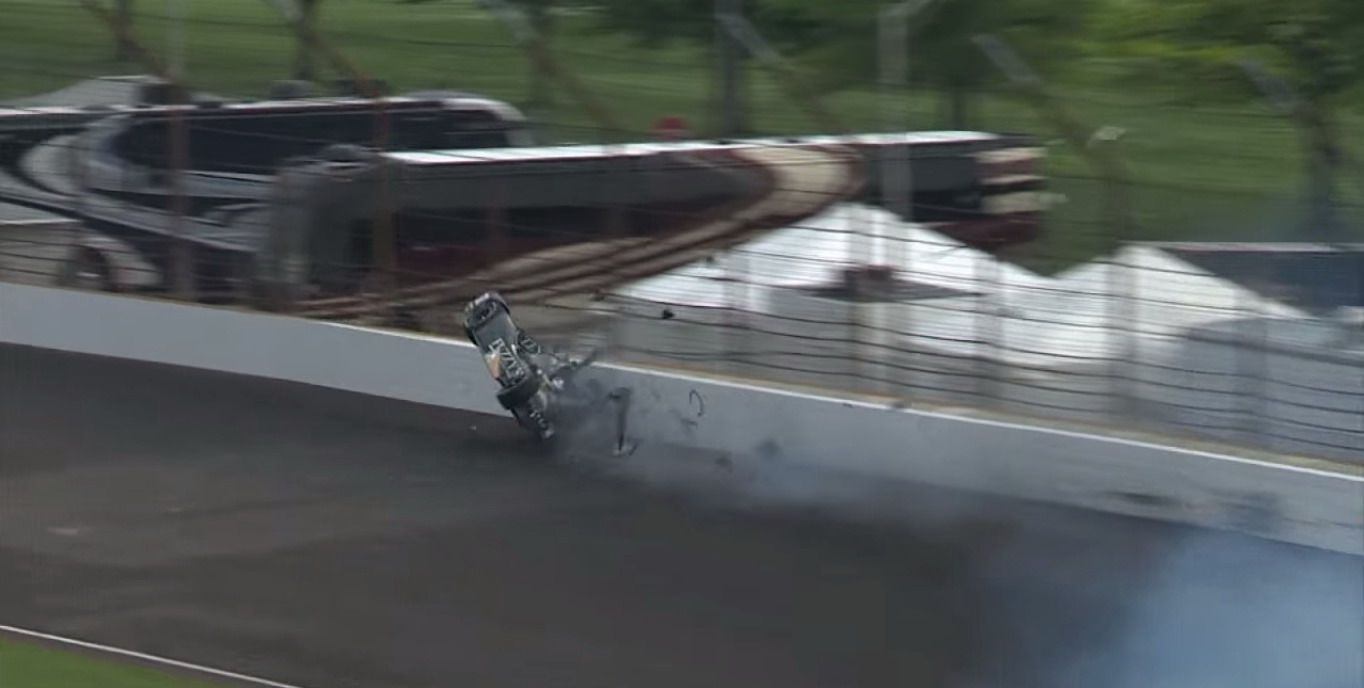If you’ve been following the lead-up to the 2015 Indianapolis 500, you’ve probably noticed the alarming rate at which cars have gone airborne. Helio Castroneves, Josef Newgarden and Ed Carpenter were all involved in similar incidents in which their cars spun, rolled backwards and then lifted into the air. All three were driving Chevrolets,->ke199 though IndyCar->ke1559 officials were careful to point out there was no way to know if the problem was specific to that manufacturer.
Not believing in coincidences, IndyCar officials announced sweeping changes to qualifying regulations at the 11th hour, forcing teams to scramble to meet the new requirements. These included abandoning qualification-specific, low-downforce speedway aero packages and boost levels. The original setups were intended to make this year’s Indy 500 qualifying one of the fastest ever.
Both Chevrolet and Honda->ke34 teams were required to fit higher downforce aero packages, both affixed to Dallara chassis, that were previously only to be used during the race. Likewise, boost levels for the twin-turbocharged 2.2-liter V-6 engines were wound down from 140 kPa to 130 kPa — a difference of about 40 horsepower.
“This morning we saw a third car get into wall, turn backwards and lift into the air. We’ve said all along we want to go faster, but we want to do so safely," said IndyCar boss Mark Miles. "Safety for drivers and fans is the top priority for INDYCAR and we will continue to be proactive in our research and development to improve all safety aspects of our sport.”
Continue reading for the full story.
Because of the sudden changes, the scheduled “Fast Nine Shootout” was cancelled, and no championship points were awarded during qualifying.
Qualifying went off without a hitch, so it looks like the changes worked. Scott Dixon drove his Chevrolet to pole position with a four-lap average of 226.760 mph. Will Power and Simon Pagenaud rounded out the top three with respective speeds of 226.360 and 226.145 mph.
To ensure there are no inherent aerodynamic issues, IndyCar has planned more testing time for both the Honda and Chevrolet speedway kits in anticipation of other high-speed rounds at Texas, Fontana and Pocono.
Why it matters
It stands to reason that if a car’s bodywork produces massive amounts of downforce moving forward, then it would have the opposite affect while rolling backward at similar speeds. It’s what caused these three incidents, and a similar one at the Nürburgring->ke999 recently, which saw a (significantly heavier) Nissan GT-R GT3 lift itself over a catch-fence, tragically killing a spectator.
The strange thing is that NASCAR->ke3635 actually solved this problem way back in 1994 with the addition of roof flaps. Mounted at the rear of the roof, these flaps open when a car starts moving backwards at high speeds. By acting as spoilers that disrupt airflow over the top of the car and reducing low-pressure zones, roof flaps have greatly reduced the frequency of potentially dangerous airborne crashes.
I’m no race car engineer, but this seems like an obvious solution to common problem.

